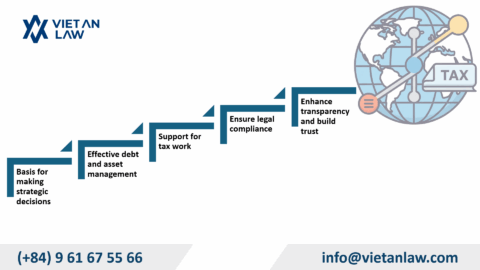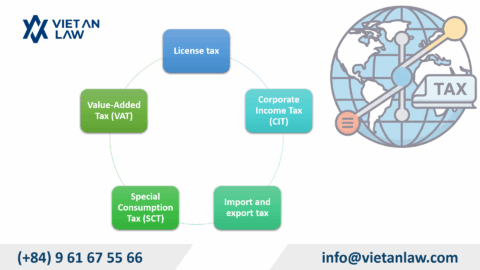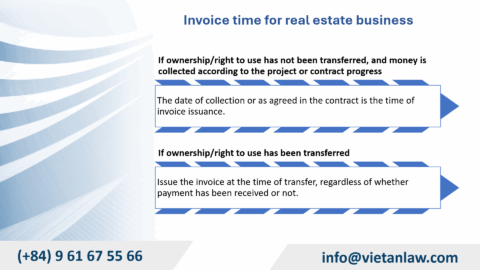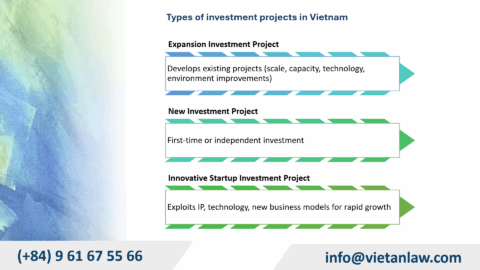VAT (Value Added Tax) (also known as value added tax) is a type of consumption tax applied on the added value of goods and services during the production and business process. It is one of the most important and popular taxes in the world and plays an important role in balancing the state budget and supporting national development. In Vietnam, there are two methods of calculating value added tax: the value added tax deduction method and the direct calculation method on added value. In the article below, Viet An Law will Compare deductible and direct VAT calculation methods in Vietnam as current law.
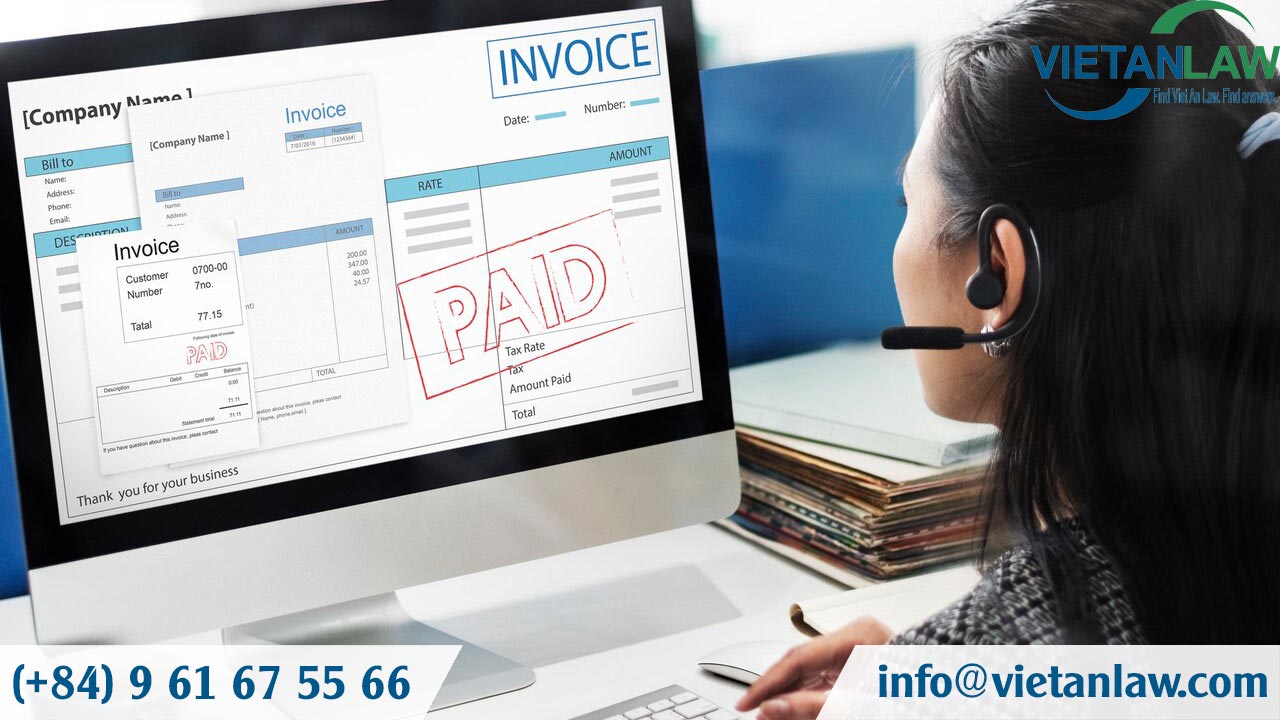
Table of contents
Value added tax (VAT) is an indirect tax calculated on the added value of goods and services from production to consumption, and this amount is paid into the state budget based on the consumption of goods and services.
VAT originates from France and has been widely applied in more than 130 countries around the world. In Vietnam, the Value Added Tax Law was passed and took effect from January 1, 1999.
A special feature of VAT is that it is calculated at each stage of the production and circulation of goods. It is calculated on the added value at each stage, and the tax amount paid in the previous stage is deducted to avoid multiple tax calculations on the same added value.
When purchasing goods or using services, consumers will be responsible for paying VAT. This means that VAT will be included in the selling price of goods and services, and this amount will be included in the state budget through the tax payment mechanism.
Deduction of VAT (value added tax) is a method of calculating the amount of tax that needs to be paid to the State budget in an enterprise. To determine the actual VAT amount, the enterprise takes the output VAT amount (calculated on the value of goods and services sold) minus the input VAT amount (calculated on the value of purchased goods and services).
During business, businesses buy goods and services from other suppliers and pay input VAT on these goods and services. When selling goods and products to customers, businesses collect VAT from customers based on the value of goods and services sold, called output VAT. Then, the business will calculate the actual VAT amount to be paid by subtracting the input VAT amount from the output VAT amount.
Haco Company imported a shipment worth 500 million VND, this item is subject to a VAT rate of 10%.
At that time, the amount of input VAT that Haco company needs to bear is 10% x 500 million = 50 million VND.
When Haco company sells a shipment to the buyer for 650 million VND/lot, the buyer is subject to a 10% VAT rate on this item.
Then, the amount of output VAT that the buyer needs to bear is 10% x 650 million = 65 million VND.
The amount of VAT that Haco company needs to pay into the State budget is 65 million – 50 million = 15 million VND. That is a tax deduction.
Direct tax calculation (direct VAT) is a method of calculating VAT based on the rate of the revenue of the enterprise in each specific business line. According to this method, businesses only need to calculate the amount of VAT they need to pay based on their total revenue from sales or services provided, regardless of the input VAT level.
BENTO Company provides consulting services on business establishment and tax registration using the direct method. The company has a total revenue of 200 million VND during the business period. The direct VAT rate for this sector is 5%. Therefore, the VAT amount that BENTO Company needs to pay is 10 million VND (200 million x 5%).
| Criteria | Deduction method | Direct method |
| Legal basis | · Article 10 of the Value Added Tax Law
· Article 12 Circular 219/2013/TT-BTC guiding the Law on Value Added Tax · Circular 119/2014/TT-BTC amending Circulars to reform and simplify tax administrative procedures |
· Article 11 of the Value Added Tax Law
· Article 13 Circular 219/2013/TT-BTC guiding the Law on Value Added Tax · Circular 119/2014/TT-BTC amending Circulars to reform and simplify tax administrative procedures |
| Applicable subjects | · Business establishments with annual revenue from selling goods and providing services of one billion VND or more
· Business establishments voluntarily register to apply the tax deduction method · Foreign organizations and individuals providing goods and services to conduct search, exploration, development, and exploitation of oil and gas pay tax according to the deduction method, the Vietnamese party declares and submits the deduction on its behalf |
· Operating businesses and cooperatives with annual revenue below the revenue threshold of one billion VND
· Newly established businesses and cooperatives · Business households and individuals; Foreign organizations and individuals doing business in Vietnam not under the Investment Law and other organizations that do not implement or do not fully implement accounting, invoices, and documents according to the provisions of law (except for Foreign organizations and individuals providing goods and services to conduct oil and gas search, exploration, development, and exploitation activities) · Other economic organizations that are not businesses or cooperatives |
| Invoice | VAT invoice | Bill of sale |
| How to calculate tax | · Amount of VAT payable = Output VAT amount – Deductible input VAT amount.
· Output VAT amount = Total VAT amount of goods and services sold recorded on the VAT invoice. Deductible input VAT amount = Total VAT amount recorded on VAT invoices for purchases of goods and services, VAT payment documents for imported goods. |
· Case 1: Applicable to gold, silver, and gemstone trading and processing activities.
VAT amount payable = (VAT of gold, silver, gemstones) x (Tax rate). · Case 2: Applicable to individuals and business households; Enterprises and cooperatives with a revenue of less than 1 billion VND; Foreign individuals and organizations doing business but not having a permanent establishment in Vietnam. VAT amount = Revenue x Tax rate (%) |
| Tax | There are 05 types of tax rates applied to each group of goods and services, specifically:
· No taxes; · Special tax rates; · Tax rate 0%; · Tax rate 5%; · Tax rate of 10% (applies to all goods and services not in the above 4 groups). |
The percentage to calculate VAT is determined according to each specific activity:
· Distribution and supply of goods: 1%; · Services and construction excluding raw materials: 5%; · Production, transportation, services associated with goods, construction with raw materials: 3%; · Other business activities: 2% |
| Advantage | · Deduction supported with input VAT
· Helps businesses with investment projects or import activities receive tax refunds. · Helps balance the VAT that needs to be paid by recommending the use or purchase of reserve goods. |
· There is no need to implement full accounting regimes as prescribed because output VAT is not deducted.
· The VAT collection rate is low, only from 1% – 5% depending on each industry. |
Above is the table to compare deductible and direct VAT calculation methods. Clients who need tax legal advice please contact Viet An Law Firm for the best support.
